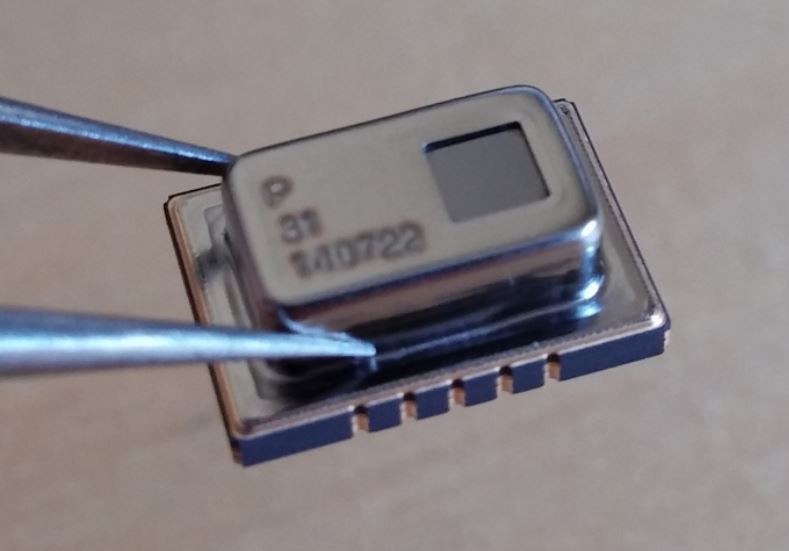Available sensor modules
A recent addition to the available sensors for use in AAL environments are MEMS infrared sensor arrays, which allow contactless temperature measurement of multiple areas at the same time. Sensors with a resolution of up to 8 x 8 pixels pixels are available within a reasonable price range for applications discussed in this paper. All of the discussed sensors use MEMS (Microelectromechanical systems) technology. The models of sensors which have been considered for use can be seen in the Table below
| Sensor | Melexis MLX90621 | Omron D6T44 | Panasonic AMG8831 |
| Pixel resolution | 16 x 4 | 4 x 4 | 8 x 8 |
| Temperature range | -20°C to 300°C | 5°C to 50°C | -20°C to 80°C |
| Operating voltage | 2.6V | 4.4 to 5.5V | 3.3V |
| Data interface | I²C | I²C | I²C |
| Current consumption | 7mA | 5mA | 4.5mA |
| Field of view | 60° x 15°, 40° x 10°, 120° x 30° | 44.2° x 44.2° | 60° x 60° |
The Omron D6T44 was not chosen due to the high operating voltage and power consumption. The Omron D6T1616 was a promising alternative, operating on 3.3V and, providing the best pixel resolution of all the considered sensors. (16 x 16) However, the D6T1616 was only produced in small quantities for developers and the manufacturer stopped development on this product, therefore it was of little use to try obtaining a sample for evaluation. The Melexis MLX90621 is a sensor mainly intended to be used in automobiles where the wide aspect radio of 1:4 allows tracking of 2 passengers.
In the end, the AMG8831 was chosen for offering a decent resolution and 3.3V operation. While the power usage of neither sensors fits the requirements of an ultra-low-power application, it offers the best trade-off of resolution and power consumption.

Evaluation of the AMG8831
The AMG8831 is a 3.3V logic high-gain 8x8 pixel infrared grid array with a measuring range of 0°C-80°C per pixel. The pixel data is transferred over I²C, with one pixel temperature being transferred in 12 bits (11 bits + sign) spread over 2 bytes. The temperature resolution is 0.0625°C.
 karpour
karpour
Discussions
Become a Hackaday.io Member
Create an account to leave a comment. Already have an account? Log In.